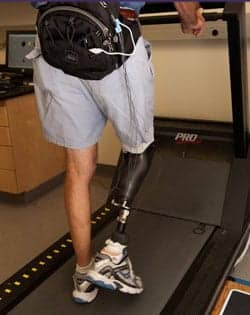
The data is then transmitted wirelessly to a tablet that displays changes in the patient’s limb size about 15 times a second. The device is designed to measure the percent increase or decrease of fluid volume in a patient’s limb by receiving data from small electrodes placed in different locations on the leg. Researchers say that instrument electronics can be worn in a fanny pack and include a circuit board intended to calculate the fluid volume change in the leg tissues, transmitting data wirelessly to a computer or storing it on the device.
A larger prototype of the device was initially tested for 2 years. It has given way to a checkbook-sized portable version that researchers have taken to clinics in Seattle and San Francisco. The researchers note that in the long-term, they aim to build a smaller device that could work for a couple weeks or longer in order to monitor changes in their limb sizes during their daily routines.
The release states that this summer, the team will work with patients nationwide and in Canada using vacuum-suction technology to keep the residual limbs snug in the sockets and adjust the fit when tissues swell and shrink. The university adds that patients say the vacuum can assist in improving socket comfort and in reducing pain. However, the technology requires careful maintenance and may be disruptive when the noisy vacuum is turned on.
[Photo Credit: Mary Levin, University of Washington]
[Source: University of Washington]



